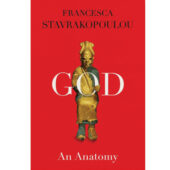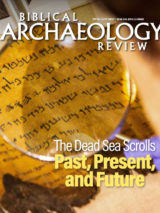Jesus, the Gospels, and Cinematic Imagination
A Handbook to Jesus on DVD
by Jeffrey L. Staley and Richard Walsh
Louisville: Westminster John Knox Press, 2007, viii + 208 pp.
$19.95 (paperback)
Reviewed by Leonard Greenspoon
Rarely have I perused a book that adheres so closely to its stated goals, in this instance, as formulated in its subtitle. The heart of this volume indeed consists of 18 chapters, each allotted to a different Jesus film (to use the authors’ term) that is available on DVD. The films range from the well-known to the obscure (at least for me), and cover almost a century of cinematic history from 1905, beginning with the silent film The Life and Passion of Jesus Christ, to Mel Gibson’s The Passion of the Christ in 2004. In between are works by well-known directors, features specifically made for conservative Christian audiences, updatings, spoofs, musicals, made-for-television miniseries, and even a film populated entirely by puppets.
These chapters are sandwiched between an introductory “Watching Jesus Films” and a concluding “Teaching Jesus Films,” both filled with questions to prime further discussion. These contents are topped off with a minute-by-minute (often second-by-second) listing of key gospel scenes in each DVD, organized within “A Gospel Harmony” that allows professors, ministers or film buffs to go to exactly the desired point without having to search or, as we used to say, “wind and rewind.”
Each film chapter is organized in the same pattern: Plot Summary (seems flawlessly presented), Memorable Characters (not surprisingly Jesus is a staple of such lists, with others varying widely from film to film), Memorable Visuals, Key Scriptures, Cultural Location/Genre, Director, DVD Extras and Technical Features, and DVD Segments (where they exist). Users of this volume can thus locate similar material in the same spot for each film. No film is included in this book unless it is available on DVD. “Sunday-school Gospel-story films” and word-for-word visual reproductions of a Gospel are omitted. There is no listing of parallels to passages in the Hebrew Bible/Old Testament. The authors declare, “We will be kind and generous and leave that undertaking for another scholar or two.”
However, such generosity does not absolve them from taking more seriously charges of anti-Semitism that have frequently been leveled against some of these films. It is amazing to find only the briefest references to this in connection with Gibson’s film. The authors write: “Not surprisingly, critics complained about the film’s mind-dulling violence and anti-Semitism.” That’s all. And the authors place this statement under “Plot Summary” and not under “Cultural Location.”
This example is symptomatic of the single weakness of this volume: insufficient attention to the audiences’ reception of these films. The book contains not a single reference to the many books and articles written about Gibson’s movie.
I still remember vividly the pickets, protests and sharply worded editorials that “greeted” Martin Scorsese’s The Last Temptation of Christ in the late 1980s—and the mixture of feelings I experienced as I crossed the picket line to see the film. While such details and their larger cultural and social reverberations may not be of interest to everyone who shows Jesus films, they should have been covered in this book.
Aside from these few qualifications, I have no hesitation in recommending Jesus, the Gospels, and Cinematic Imagination as a trustworthy handbook to Jesus on DVD.
Leonard Greenspoon holds the Klutznick Chair in Jewish Civilization at Creighton University in Omaha, Nebraska and he writes BAR’s “The Bible in the News.”
Must-Read Free eBooks
Want more Bible history?
Sign up to receive our email newsletter and never miss an update.
All-Access Pass
Dig into the world of Bible history with a BAS All-Access membership. Biblical Archaeology Review in print. AND online access to the treasure trove of articles, books, and videos of the BAS Library. AND free Scholar Series lectures online. AND member discounts for BAS travel and live online events.
Subscribe Today












